So how do you make sure you are in one of those boats with a fighting chance of winning? Well, firstly, this is a lot to do with your selection of boat, but there are also some tactics you can apply on the race course to maximise your chances. And no one can deny there is no small amount of luck involved in winning a pursuit race.
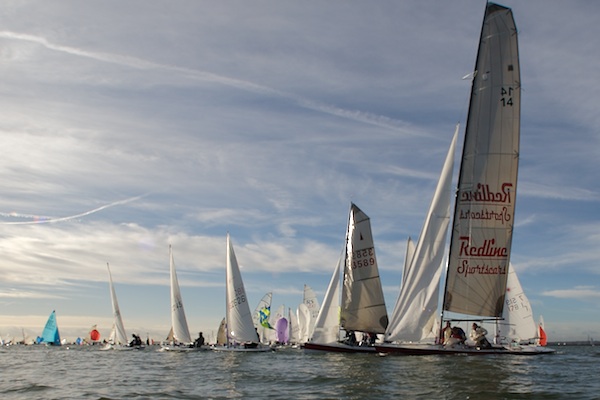
© www.ianroman.com
In theory, every dog has his day, and if you look down the roll call of winners in the Bloody Mary (biggest pursuit race in the UK, probably the World), you will see a huge array of different boats represented, big and small, fast and slow.
However, the reality is that some dogs have more days than others. Here are some tips on to maximise your chances of success in pursuit racing....
Master a difficult class
If you can get to grips with a class that is difficult to handle, such as a 49er or International Moth, then you stand a good chance of being able to outsail your class handicap. This accounts for the consistent success of Moths, International 14s, and 49ers in such events.
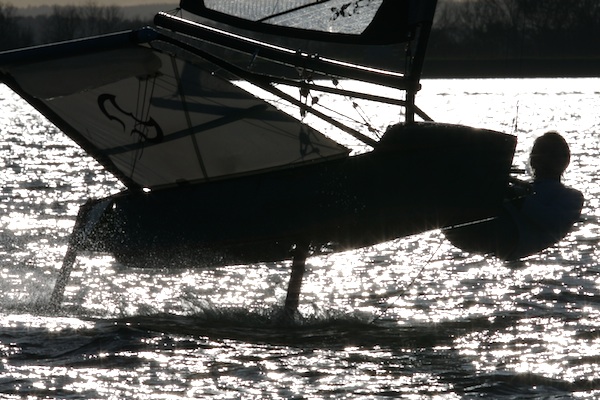
© www.ianroman.com
Choose a boat that performs inconsistently across the wind range
Sail a boat that performs particularly well in one wind condition but poorly in others, provided you pick the right day. For instance, an underpowered 420 is great for a big breeze but terrible for a light-wind drifter.
In fact there are two sub-rules we can pick out of this:
1. Choose a boat with good righting moment in strong winds
2. Choose a boat with poor righting moment for light winds.
This means that, by and large, trapeze boats and catamarans will perform well when they get the chance to use their width. Hiking-out boats like GP14s and RS400s will be at their best in Force 2 or less. On the other hand, these boats perform atrociously outside of their favourite conditions, so be prepared for some heavy defeats too.
Aside from these general points about handicap racing, there are some further tips that are specifically relevant to the art of pursuit racing.
Avoid a popular class
The most popular classes tend to be the boats that are mid-range both in terms of size and speed through the water. Here, you are battling for clear air in the most congested part of the fleet. You are fighting from the start gun, and you know you have to win your own class before you can even think about fighting for overall honours. Every time you have to tack to avoid a class mate, or luff up downwind to protect your clear air, is a further blow to your dwindling chances of winning overall.
Avoid starting just behind a popular class
If you are sailing a boat that is marginally quicker than another popular class, say a Lark compared with a RS200, then you will have a tough time breaking through the wall of bad air. If the bulk of the large fleet in front has started on starboard and gone left, try starting on port or tacking off early after the start to find some clear air. This leads on to the next point:
Sail where everyone else isn't!
Clear air is king in a pursuit race, so be prepared to sail away from the pack to find it. In fact, you can find a herd mentality often exists in pursuit races, with the majority seemingly aiming for one particular side of the course. If there is a good reason for going there, such as a stronger breeze or persistent shift, then you'd have to be brave not to go there too with the rest of the herd. But if you can satisfy yourself that there is no perceptible advantage to one side of the course or the other, then get out into the clearest air you can find. Chips Howarth said the same thing recently about the Symmetric Grand Prix that he won at Datchet Water, albeit this was a straight handicap event and not a pursuit race. But the same principle applied there, from what he said, of heading out to a corner to get clear air on a layline, and hoping that you'd just picked the right corner. Very different tactics to the conservatism of one-design racing, but this is a radically different type of racing, after all.
Asymmetric advantages
Asymmetric spinnakers can give you huge benefits and downsides, depending on the prevailing conditions and the way the course has been set. One of the absolute killers for a boat that runs dead downwind, such as a singlehander or a conventional spinnaker boat, is that the blanketing effects from boats behind are enormous. Everyone is slowing everyone else up - except for the asymmetric boats. These lucky people have two distinct advantages on a run: a) They can sail out to the corners away from the congested rhumb line and find clear air; b) They are relying to a large extent on apparent wind, which they can use to break through the wind shadows of boats running square downwind.
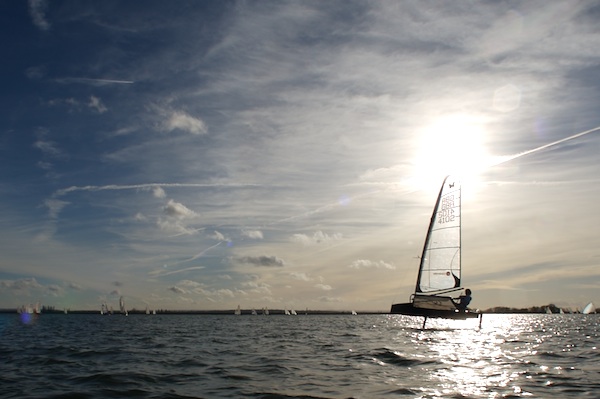
© www.ianroman.com - It helps to sail where everyone else ISN'T!
Symmetric advantages
The downside of asymmetric spinnakers is that they are very strict about where they will allow you to sail. In winds of over 12 knots, a high-powered boat such as a 49er or International 14 is capable of flying its gennaker only on a run or the very broadest of reaches. So if there are any beam reaches involved, they will have to two-sail them while relatively underpowered boats like Fireballs or 470s can still fly their symmetric spinnakers very effectively. So to a large extent, your fate is in the hands of the race officer and the course he sets.
Heads Up
Not so much a tip, but a word of warning, this is a general reminder that having boats of different speeds and sizes on the same confined waters can lead to some dangerous situations. The unique demands of pursuit racing can call for the full repertoire of your boathandling skills, and sometimes calls for some fast thinking to avoid potentially disastrous consequences. Forget about the finer intricacies of boat tuning like vang or Cunningham tension if this means you are distracted from what's going on around you. The legs of the course are rarely long enough to justify too much tweaking, so just set up your boat to have good average speed around the course, and forget about the subtleties. Instead, keep a weather eye for how the race is developing around you, spot the opportunities and dangers, and make them work for you.
Keep your nose clean
Stay out of trouble, even if you have right of way, as pressing home a port/starboard right of way issue could leave you in more trouble than just waving another boat past. Aggressive tactics don't win pursuit races, they just lose friends. And have respect for other boats around you. I have seen a certain International 14 ‘bully' its way around the inside of a mark at the Bloody Mary, calling for rights on a gaggle of Mirrors and Toppers inside the two boatlengths zone. Well excuse me, but with the rapid closing speeds of a 14 compared with a Mirror, how on earth does a 14 ever have rounding rights on a boat that has been bobbing up and down on the same spot for the past five minutes? That's both rude and wrong.
Asymmetrics v The Rest
On the other hand, be aware of the limitations of asymmetric spinnaker boats. Fast planing boats like 14s and 49ers have only limited angles within which they can sail downwind, perhaps as little as 10 degrees in strong winds. Sometimes a gybe is the only way to alter course. They will do their best to avoid getting in anyone else's way (with the exception of the 14 just mentioned), but try to make life relatively simple for them if you can. This is particularly the case in upwind/downwind situations, where closing speeds are high.
Boats with large asymmetrics have a blind spot ahead and to leeward, so if you can't see their faces as you're merrily sailing along upwind, they probably can't see yours, or your whole boat for that matter. If you think you are anyway close to collision course, yell ‘windward boat' at the top of your lungs. If that doesn't provoke a response, then tack out of their way and protest them if you feel sufficiently strongly about it. But don't tangle with them, as that will end up in a mess of broken boats or bones.
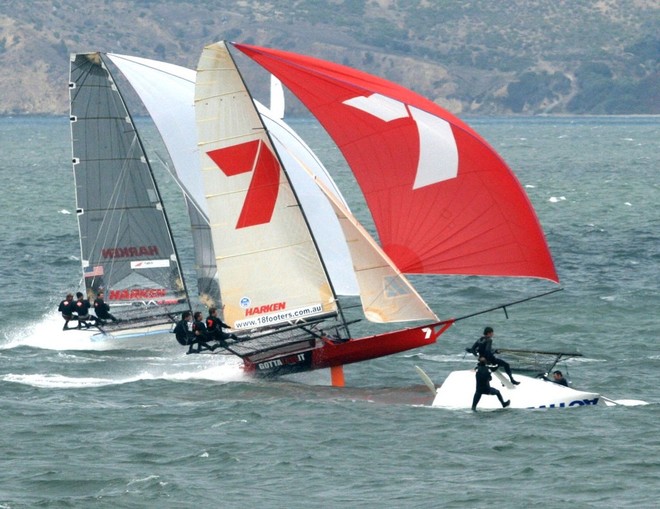

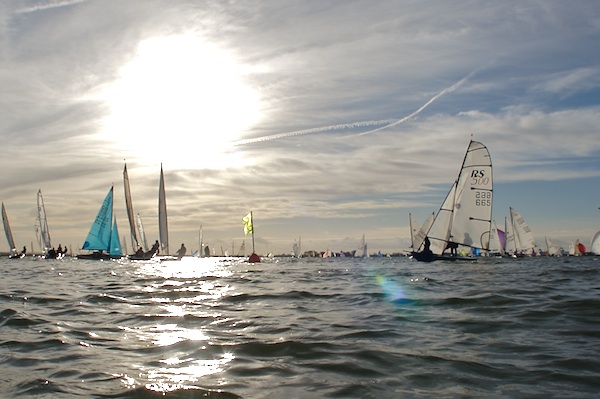 One-design racing is the purest measure of sailing prowess, but if you spend most of your sailing doing club races, then doubtless you will be spending much of your time racing under handicap. So of course you want to know how to 'milk' the system! Indeed, some sailors even choose their boat according to its perceived performance under handicap. Now, that's what you call pot hunting...
One-design racing is the purest measure of sailing prowess, but if you spend most of your sailing doing club races, then doubtless you will be spending much of your time racing under handicap. So of course you want to know how to 'milk' the system! Indeed, some sailors even choose their boat according to its perceived performance under handicap. Now, that's what you call pot hunting... How Andy Rice & Nick Murphy won the 2003 Bloody Mary in the 49er. "We expected to have a fight on our hands with Dave Hall and Simon Hiscocks, but when their jib came separated from the forestay on the first tack, we had a clear jump on the rest of our fleet. This was a huge benefit for us, as now we could focus on looking forwards...."
How Andy Rice & Nick Murphy won the 2003 Bloody Mary in the 49er. "We expected to have a fight on our hands with Dave Hall and Simon Hiscocks, but when their jib came separated from the forestay on the first tack, we had a clear jump on the rest of our fleet. This was a huge benefit for us, as now we could focus on looking forwards...."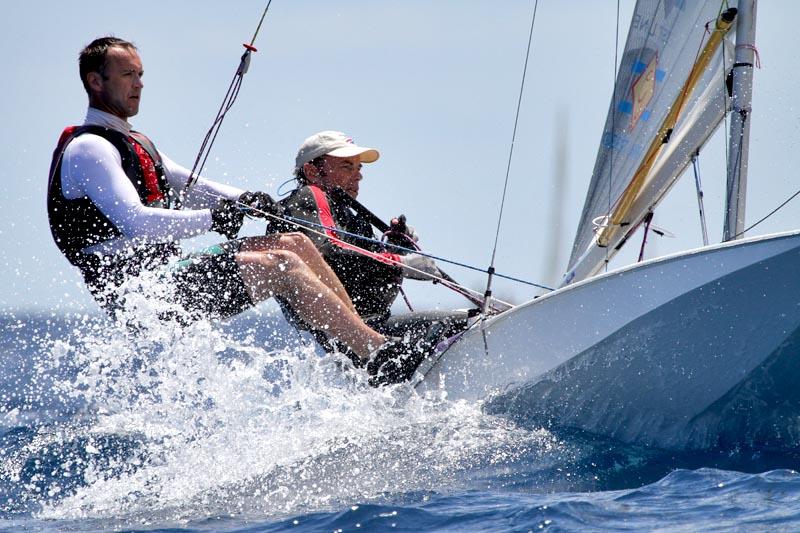 A five-time winner of the Fireball World Championships, Vyv Townend is the most successful Fireball sailor ever. He has also won a few big handicap racing events sailing against all types of other dinghies. Here Vyv shares his tips for battling your way through a fleet of unevenly matched boats and coming out on top....
A five-time winner of the Fireball World Championships, Vyv Townend is the most successful Fireball sailor ever. He has also won a few big handicap racing events sailing against all types of other dinghies. Here Vyv shares his tips for battling your way through a fleet of unevenly matched boats and coming out on top....